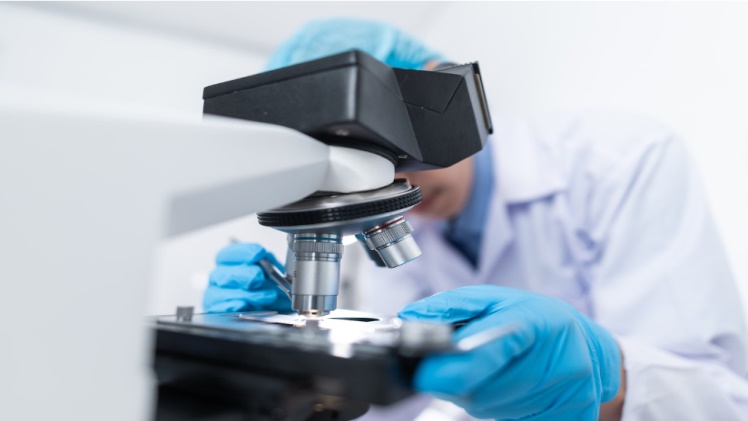The healthcare sector has always been at the forefront of technological advancements. Innovations in technology have revolutionized the healthcare industry, making it easier for healthcare professionals to provide better patient care and improve patient outcomes. The integration of new technologies such as artificial intelligence (AI), machine learning, big data analytics, telemedicine, and mobile health has transformed the way healthcare is delivered. With the advent of innovative technology, the healthcare sector has become more accessible, efficient, and cost-effective, making it possible for people to receive quality care from the comfort of their homes. This article will explore the innovative technology changing the healthcare sector and its impact on patient care, clinical workflows, and overall healthcare outcomes.
Technological Innovations in Blood Analysis
Technological innovations have greatly impacted the field of blood analysis, making it easier and more accurate to diagnose various health conditions. One such innovation is the development of advanced imaging techniques, which allows for the visualization of individual cells in the blood, including big eaters known as macrophages. These specialized cells play a critical role in the body’s immune system, ingesting and breaking down foreign particles such as bacteria and viruses. By using imaging technologies like flow cytometry and confocal microscopy, healthcare professionals can identify and quantify macrophages in blood samples, providing valuable insights into a patient’s immune function and overall health. Such technological advancements have transformed the field of blood analysis, enabling healthcare professionals to provide faster, more accurate diagnoses and treatments.
Nanomedicine
Nanomedicine is an exciting field that combines the power of nanotechnology with medicine to create innovative solutions for diagnosing and treating diseases. Nanoparticles, which are particles that are incredibly small, can be engineered to carry drugs or other therapeutic agents directly to specific cells or tissues in the body, reducing the risk of side effects and improving the efficacy of treatment. These nanoparticles can also be used for imaging, allowing healthcare professionals to visualize specific cells or tissues in the body with greater accuracy. Additionally, nanotechnology can be used to create biosensors, which are devices that detect and monitor biological signals, such as changes in blood sugar or cholesterol levels. Overall, nanomedicine holds great promise for revolutionizing the field of medicine, offering personalized and targeted urdughr treatments that are more effective and less invasive than traditional methods.
Tech in Gene Therapy
Gene therapy is a rapidly evolving field that aims to treat and potentially cure genetic diseases by introducing healthy genes into a patient’s body to replace or repair faulty genes. Recent technological advancements have made gene therapy safer and more effective, with the development of advanced gene delivery systems, such as viral vectors, nanoparticles, and CRISPR/Cas9 gene editing tools. These technologies enable targeted delivery of genes to specific cells or tissues in the body, minimizing the risk of off-target effects. In addition, advancements in genomics and bioinformatics have enabled the identification of disease-causing genes and the development of personalized gene therapies. Gene therapy has the potential to revolutionize the treatment of a wide range of genetic diseases, from rare disorders to more common conditions such as cancer and diabetes. With continued investment and research, gene therapy holds the promise of offering life-changing treatments to patients in need.
What is the Internet of Medical Things?
The Internet of Medical Things (IoMT) refers to the network of medical devices, software applications, and health systems that are connected and share data through the internet. These devices and systems are designed to collect and transmit patient health data in real-time, allowing healthcare providers to remotely monitor patients, diagnose conditions, and provide personalized care. Examples of IoMT devices include wearable health trackers, remote patient monitoring systems, insulin pumps, and electronic health records (EHRs). IoMT has the potential to transform the healthcare industry by improving patient outcomes, reducing healthcare costs, and increasing access to care. However, it also raises concerns about patient privacy and the security of medical data. As the IoMT continues to evolve, it will be important for healthcare providers and policymakers to ensure that patient privacy and data security are prioritized.
In conclusion, technological innovations have greatly impacted the healthcare sector, providing healthcare professionals with powerful tools to diagnose, treat, and monitor a wide range of medical conditions. From nanomedicine and gene therapy to the Internet of Medical Things, these innovations are transforming the way healthcare is delivered, making it more accessible, efficient, and cost-effective. As technology continues to evolve, the possibilities for improving patient care and outcomes are endless. However, it is important to remember that technology is only a tool and should always be used in conjunction with the expertise and compassion of healthcare professionals. It is crucial that we continue to invest in and research innovative technologies, while also ensuring that patient privacy and data security are protected. By doing so, we can harness the power of technology to improve the lives of patients and the healthcare industry as a whole.





